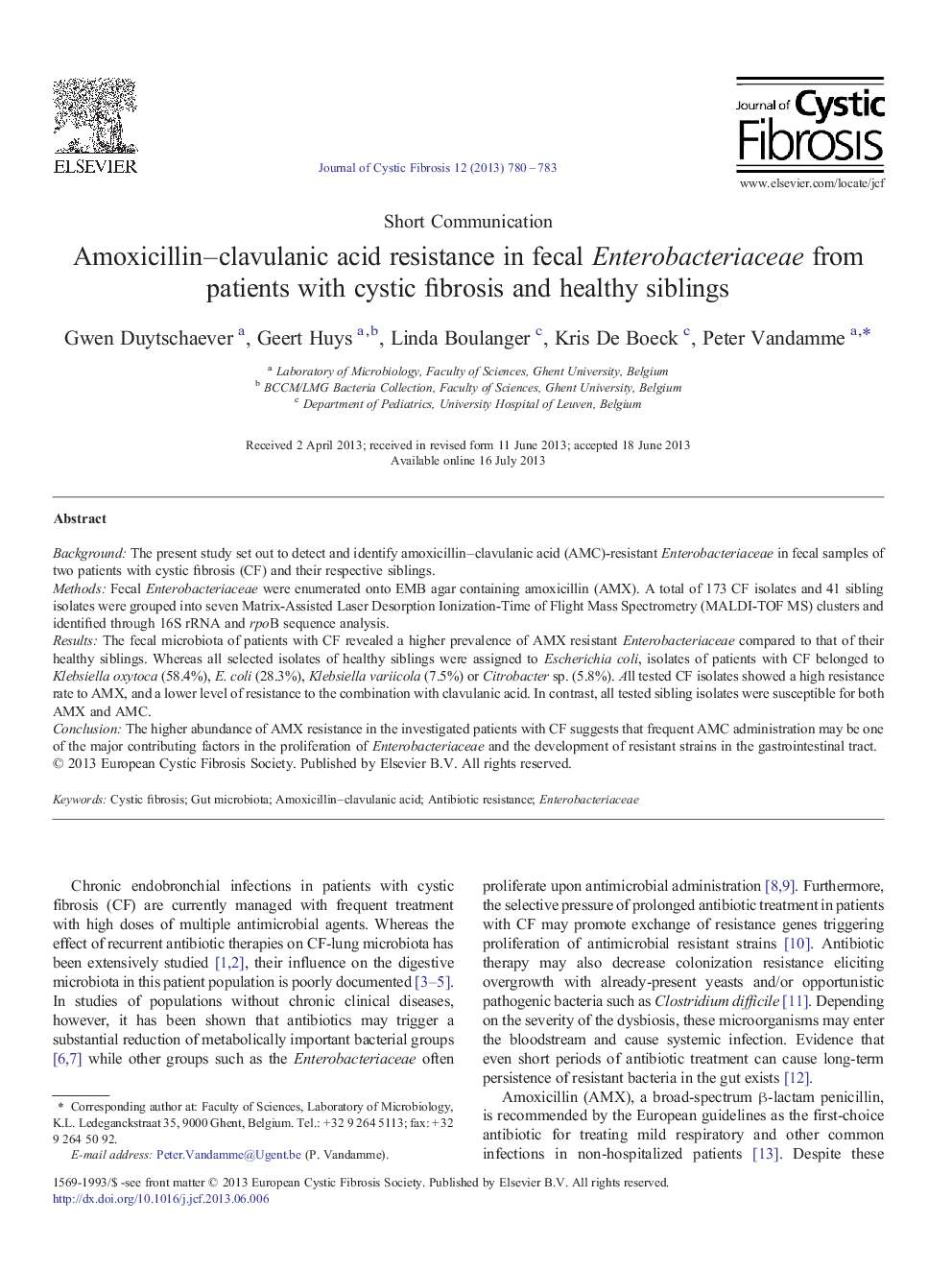| Article ID | Journal | Published Year | Pages | File Type |
|---|---|---|---|---|
| 6240781 | Journal of Cystic Fibrosis | 2013 | 4 Pages |
BackgroundThe present study set out to detect and identify amoxicillin-clavulanic acid (AMC)-resistant Enterobacteriaceae in fecal samples of two patients with cystic fibrosis (CF) and their respective siblings.MethodsFecal Enterobacteriaceae were enumerated onto EMB agar containing amoxicillin (AMX). A total of 173 CF isolates and 41 sibling isolates were grouped into seven Matrix-Assisted Laser Desorption Ionization-Time of Flight Mass Spectrometry (MALDI-TOF MS) clusters and identified through 16S rRNA and rpoB sequence analysis.ResultsThe fecal microbiota of patients with CF revealed a higher prevalence of AMX resistant Enterobacteriaceae compared to that of their healthy siblings. Whereas all selected isolates of healthy siblings were assigned to Escherichia coli, isolates of patients with CF belonged to Klebsiella oxytoca (58.4%), E. coli (28.3%), Klebsiella variicola (7.5%) or Citrobacter sp. (5.8%). All tested CF isolates showed a high resistance rate to AMX, and a lower level of resistance to the combination with clavulanic acid. In contrast, all tested sibling isolates were susceptible for both AMX and AMC.ConclusionThe higher abundance of AMX resistance in the investigated patients with CF suggests that frequent AMC administration may be one of the major contributing factors in the proliferation of Enterobacteriaceae and the development of resistant strains in the gastrointestinal tract.
